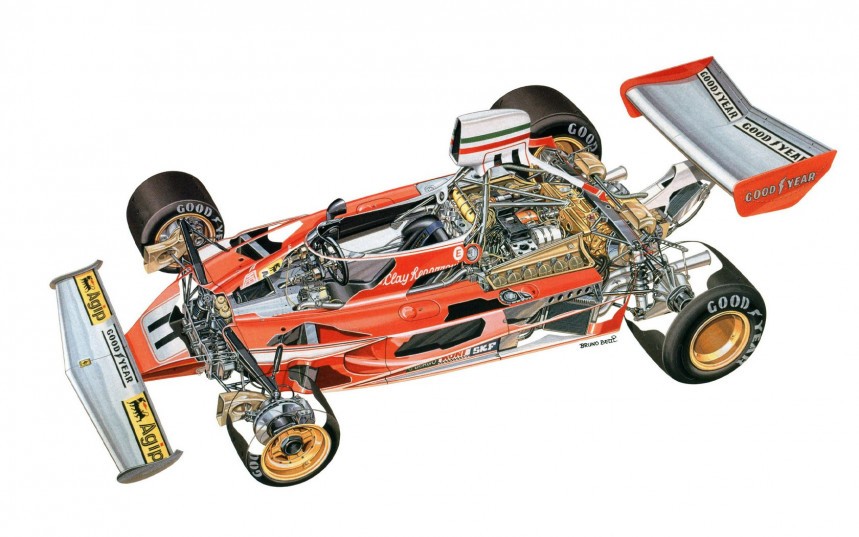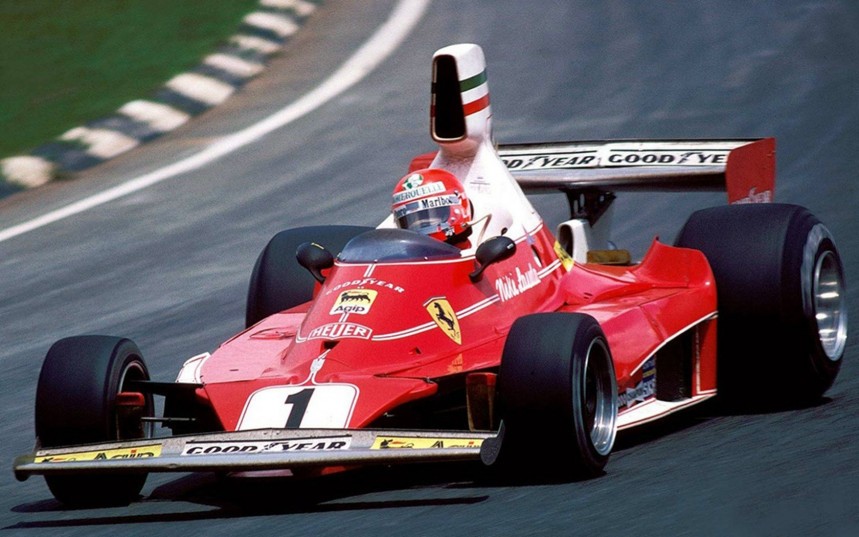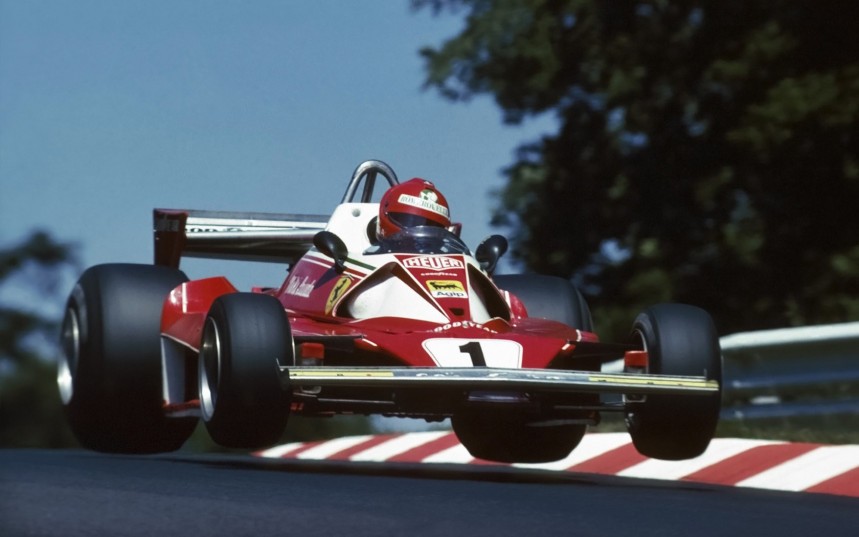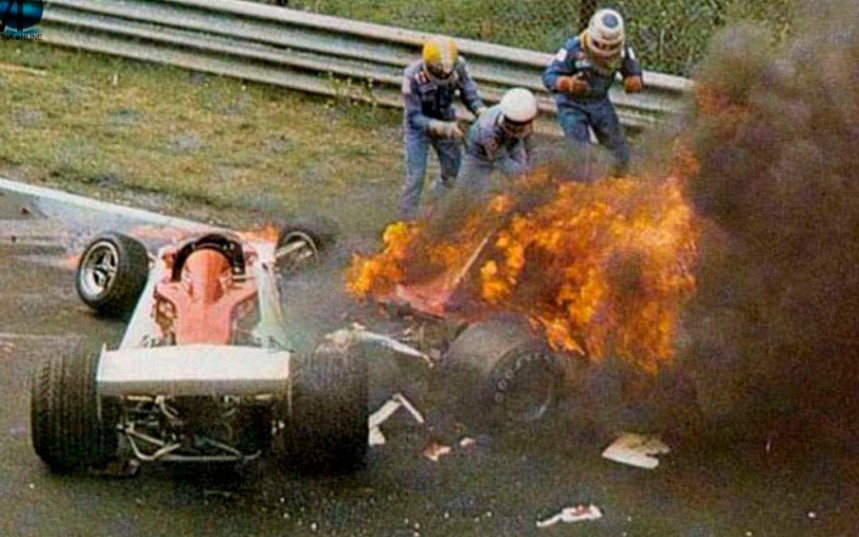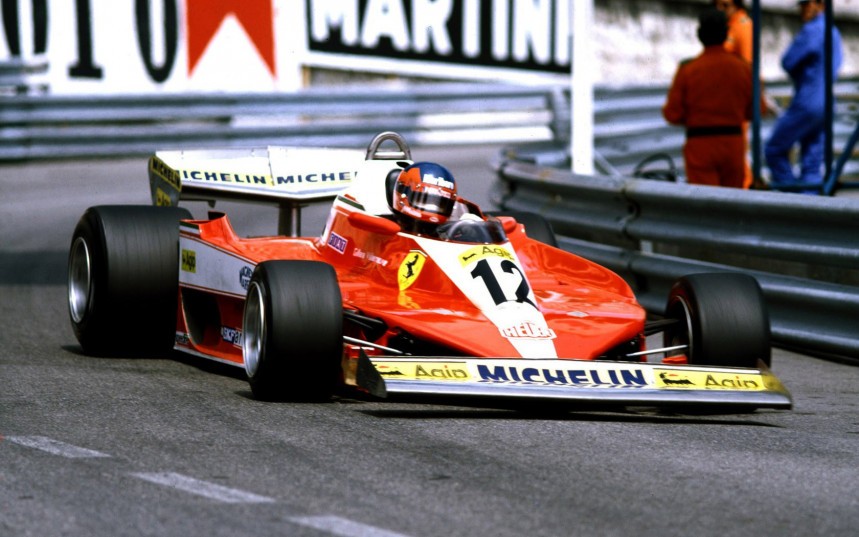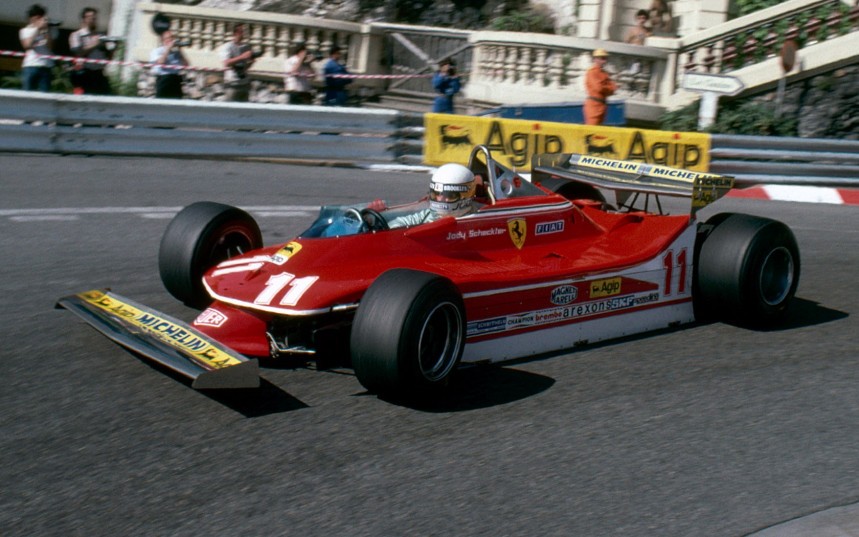The legendary 312T brought Scuderia Ferrari back to the top of Formula One when the competition was fierce and the cars extremely dangerous. It almost killed Nikki Lauda in 1976 but also helped him earn two Drivers’ Championships. Jody Scheckter won a title in 1979 driving one, and it also gave Ferrari four Constructors’ titles during its five years of racing.
It all started in the 1974 Formula One season when Ferrari lost the constructors title to McLaren, and Clay Regazzoni was defeated by Emerson Fittipaldi in the last race held at The Glen in the U.S., conceding the drivers’ title to the Brazilian.
During that offseason, Enzo Ferrari's named his assistant, a young lawyer named Luca di Montezemolo, manager of the Scuderia. His first move was to re-appoint Mauro Forghieri as chief engineer and followed that up by convincing The Boss to keep Niki Lauda as one of their drivers.
Under the constant oversight of Forghieri, the team began developing a new racecar since it became apparent that the aging 312B needed a complete overhaul to solve its constant handling issues.
The result was the radical 312T, a completely new car that used an aluminum monocoque chassis mounted on a tubular steel spaceframe. The suspension system was also redesigned, enabling engineers to narrow the front of the chassis and make it more aerodynamically efficient.
It was powered by a 510-horsepower 3.0-liter (2,992 cc; 182.6 cu in) naturally aspirated flat-twelve that would become one of the most reliable F1 engines ever created.
The car used a five-speed manual gearbox that was innovatively mounted in a transverse position, resulting in a near-perfect weight distribution. This improved handling, the main problem of its predecessor.
Although it was completed in the autumn of 1974 and unveiled in Modena ahead of the new season, the 312T saw its first action in the third race held in South Africa since Ferrari decided to use the old car in Argentina and Brazil.
The first victory came in Morocco, the fifth race of the season, with Lauda beating Brazilians Fittipaldi and Pace. Ferrari would go on to win five out of the remaining nine races demolishing its competition and earning both the constructors’ and drivers’ championships thanks to Lauda's spectacular driving.
The following season, Formula 1 technical regulations were changed, with the new rules going into effect in May of that year. That meant Ferrari could continue to use the ’75 car in the first three races, which were won by Lauda and his teammate Regazzoni.
To comply with the rule changes, the Scuderia introduced the revised 312T2 at the Spanish Grand Prix. It no longer featured an airbox behind the cockpit as it was banned under the new regulations.
Engineers replaced it with NACA-shaped air intakes cleverly incorporated into both sides of the body, feeding air to each cylinder bank of the glorious flat-twelve.
Apart from that, there were few modifications, and although Lauda lost to James Hunt in Spain, the car performed well, and the Austrian went on to win three of the next five races.
The Austrian was pulled out of the burning wreck by his fellow drivers, but he sustained serious burns and was rushed to the hospital where he would fight for his life the following days.
Although he suffered terrible burns to his head and inhaled hot toxic gases that damaged his lungs, Lauda only missed two races, appearing in Monza just six weeks after the accident, with bandages covering his burns. He finished fourth with Regazzoni grabbing second place behind March-Ford’s Ronnie Peterson.
The season was closely contested, with Hunt and Lauda set to battle for the championship in the last race of the season, the Japanese Grand Prix.
Ferrari’s driver would retire after just two laps due to appalling weather conditions that awoke memories of his horrific crash. Hunt would go on and win the title, but Scuderia Ferrari would earn its second consecutive constructors’ title.
For the 1977 season, the 312T2 was uprated to B-spec. It featured a few visible changes, the most striking of which was the addition of Fiat logos for the first time.
Lauda was not happy with the way the car performed in the first two races, which led engineers to make several changes to the car, including a new rear wing and revised suspension.
He would win the next race held in South Africa but struggled mildly throughout the season due to constant issues with the new Goodyear tires.
Despite this, the 312T2B was constantly developed and helped Lauda get a second drivers’ title after only winning three out of the seventeen races.
Ferrari also won its third straight constructors’ championship that season but lost Lauda after the U.S. Grand Prix, who quit due to increasing tensions with his teammate and management.
The 1978 season saw Ferrari introduce the latest version of its highly successful car. Named 312T3, it featured a completely new chassis and monocoque structure and a redesigned suspension system.
The engine was tuned to produce around 515 hp, and the revamped bodywork was visibly flatter, improving airflow to the rear wing.
It was driven by Carlos Reutemann and Gilles Villeneuve, and although it retained its reliability, it was no match for the pioneering Lotus 79 driven by Mario Andretti. That car dominated the season and won both drivers’ and constructors’ titles, ending Ferrari’s three years of dominance.
The poor performance led to major improvements in aerodynamics, with Forghieri following Lotus’ lead and designing a ground effect car for the 1979 season.
This gave birth to the 312T4 car, which debuted with a win at the South African Grand Prix driven by Villeneuve. It would go on and obliterate the Lotus, giving Ferrari it is fourth constructors’ title in five years and earning its newest driver, Jody Scheckter, the drivers’ trophy.
The fifth and final version of the 312T was heavily modified to keep up with the Cosworth DFV teams, which were making significant progress in aerodynamics.
The wide 312 boxer engine was not helping engineers improve the car’s aero, so it struggled to make an impact early on and became less and less competitive as the season progressed.
Scuderia Ferrari did not manage to win a single race that season and the team finished 10th in the Constructors' Championship being outclassed by the Cosworth-powered teams.
In the end, the Ferrari 312T was replaced by the completely new 126CK for the 1981 season, going down in history as the most successful Formula One car ever built to that date.
During that offseason, Enzo Ferrari's named his assistant, a young lawyer named Luca di Montezemolo, manager of the Scuderia. His first move was to re-appoint Mauro Forghieri as chief engineer and followed that up by convincing The Boss to keep Niki Lauda as one of their drivers.
Under the constant oversight of Forghieri, the team began developing a new racecar since it became apparent that the aging 312B needed a complete overhaul to solve its constant handling issues.
It was powered by a 510-horsepower 3.0-liter (2,992 cc; 182.6 cu in) naturally aspirated flat-twelve that would become one of the most reliable F1 engines ever created.
The car used a five-speed manual gearbox that was innovatively mounted in a transverse position, resulting in a near-perfect weight distribution. This improved handling, the main problem of its predecessor.
The debut season: Total domination
The first victory came in Morocco, the fifth race of the season, with Lauda beating Brazilians Fittipaldi and Pace. Ferrari would go on to win five out of the remaining nine races demolishing its competition and earning both the constructors’ and drivers’ championships thanks to Lauda's spectacular driving.
The following season, Formula 1 technical regulations were changed, with the new rules going into effect in May of that year. That meant Ferrari could continue to use the ’75 car in the first three races, which were won by Lauda and his teammate Regazzoni.
To comply with the rule changes, the Scuderia introduced the revised 312T2 at the Spanish Grand Prix. It no longer featured an airbox behind the cockpit as it was banned under the new regulations.
Apart from that, there were few modifications, and although Lauda lost to James Hunt in Spain, the car performed well, and the Austrian went on to win three of the next five races.
The last Formula One race on the Nordschleife
During the tenth race of the season that took place on the famed German track, on the second lap, just after the fast left kink before the Bergwerk right-hand curve, Lauda’s 312T2 slipped to the right and swirled through the fencing, into a dirt bank. It then bounced back onto the track, bursting in flames.Although he suffered terrible burns to his head and inhaled hot toxic gases that damaged his lungs, Lauda only missed two races, appearing in Monza just six weeks after the accident, with bandages covering his burns. He finished fourth with Regazzoni grabbing second place behind March-Ford’s Ronnie Peterson.
The season was closely contested, with Hunt and Lauda set to battle for the championship in the last race of the season, the Japanese Grand Prix.
Ferrari’s driver would retire after just two laps due to appalling weather conditions that awoke memories of his horrific crash. Hunt would go on and win the title, but Scuderia Ferrari would earn its second consecutive constructors’ title.
312T2 B: Not the best version but still good enough for another double
Lauda was not happy with the way the car performed in the first two races, which led engineers to make several changes to the car, including a new rear wing and revised suspension.
He would win the next race held in South Africa but struggled mildly throughout the season due to constant issues with the new Goodyear tires.
Despite this, the 312T2B was constantly developed and helped Lauda get a second drivers’ title after only winning three out of the seventeen races.
Ferrari also won its third straight constructors’ championship that season but lost Lauda after the U.S. Grand Prix, who quit due to increasing tensions with his teammate and management.
WIthout Lauda, the 312T3 was no match for the revolutionary Lotus 79
The engine was tuned to produce around 515 hp, and the revamped bodywork was visibly flatter, improving airflow to the rear wing.
It was driven by Carlos Reutemann and Gilles Villeneuve, and although it retained its reliability, it was no match for the pioneering Lotus 79 driven by Mario Andretti. That car dominated the season and won both drivers’ and constructors’ titles, ending Ferrari’s three years of dominance.
The final years: another double followed by an abysmal season
This gave birth to the 312T4 car, which debuted with a win at the South African Grand Prix driven by Villeneuve. It would go on and obliterate the Lotus, giving Ferrari it is fourth constructors’ title in five years and earning its newest driver, Jody Scheckter, the drivers’ trophy.
The fifth and final version of the 312T was heavily modified to keep up with the Cosworth DFV teams, which were making significant progress in aerodynamics.
The wide 312 boxer engine was not helping engineers improve the car’s aero, so it struggled to make an impact early on and became less and less competitive as the season progressed.
Scuderia Ferrari did not manage to win a single race that season and the team finished 10th in the Constructors' Championship being outclassed by the Cosworth-powered teams.
In the end, the Ferrari 312T was replaced by the completely new 126CK for the 1981 season, going down in history as the most successful Formula One car ever built to that date.










